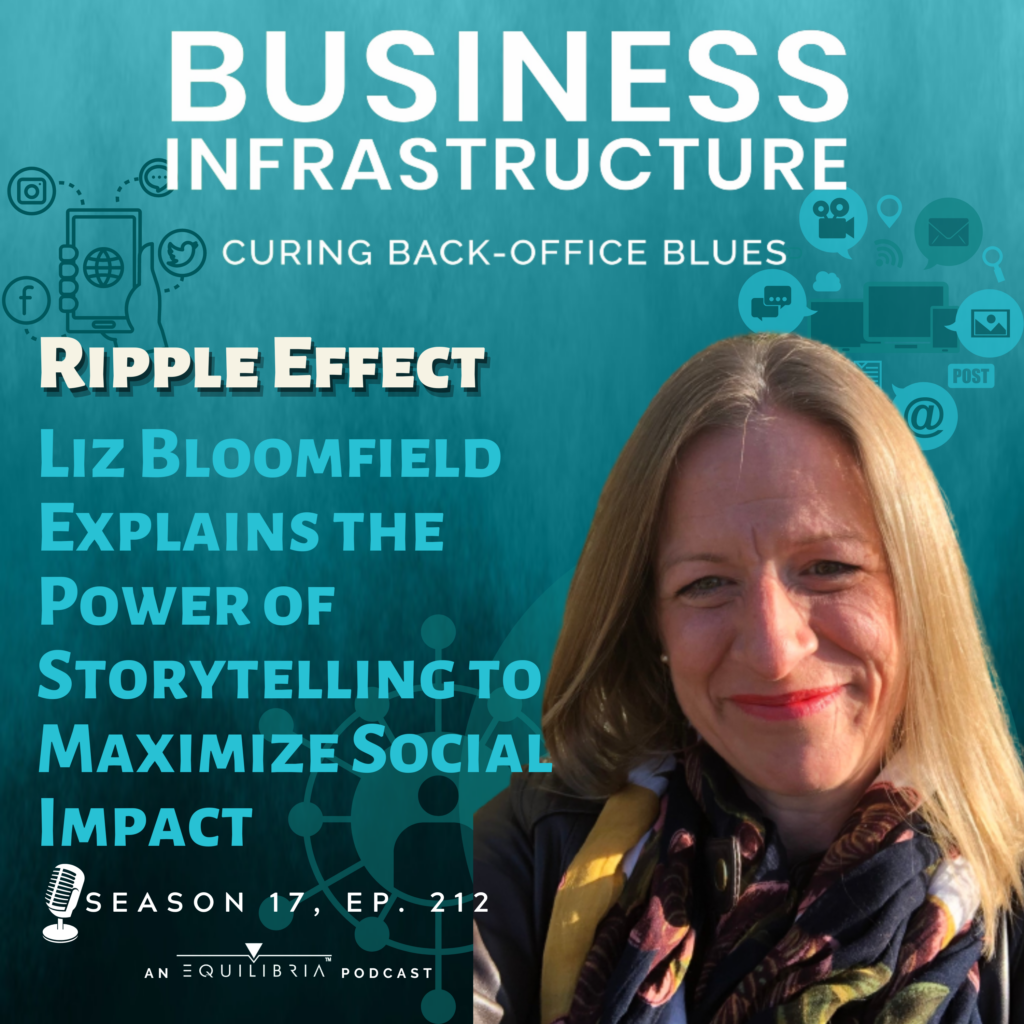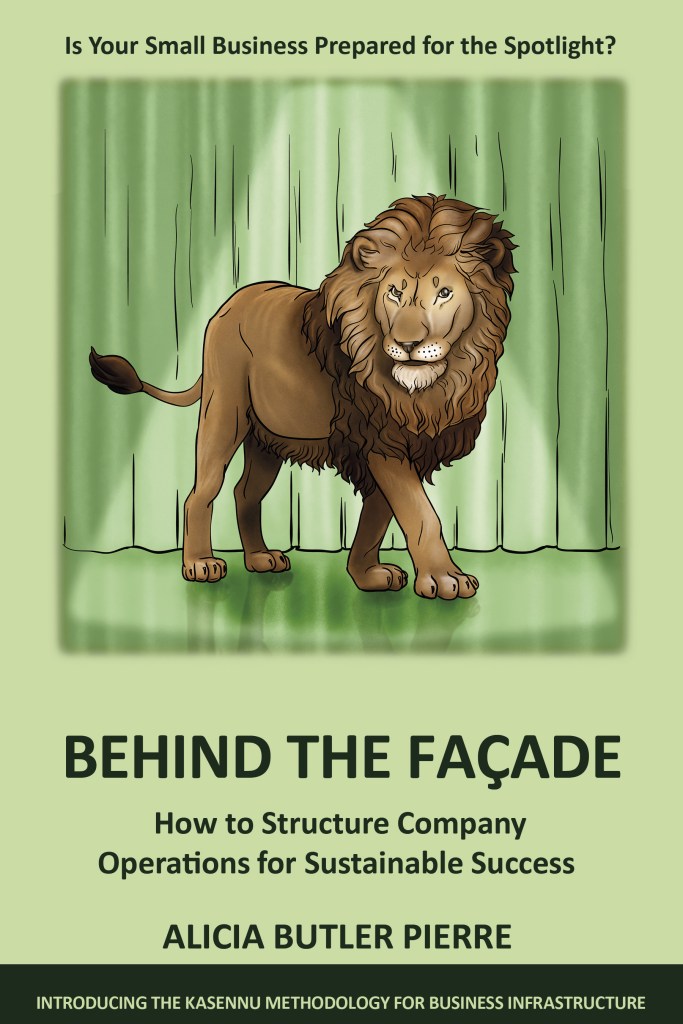Transcript
“Storytelling is the glue that holds together all of those different elements of business processes and being able to grow an organization because whatever it is that you are going to do to, in order to scale your operation, you need to be able to communicate that effectively. And storytelling is the way in which you are equipped to be able to do that.”
According to National Geographic, storytelling is universal to the human experience. They define it as the use of visual, literary, auditory, or other creative media to educate, inform, entertain, or inspire an audience to take action.
This is the Business Infrastructure podcast – the show where we offer strategies, tactics, and resources to cure back-office blues and keep your business operating as good on the inside as it looks on the outside. I’m your host, Alicia Butler Pierre and I know firsthand what storytelling can do to draw people into your message. It’s the way I formatted my book, the way I give speeches, write articles, and, moving forward, it’s also the way I’ve decided to reformat this very show. And now you’re about to also discover the power of storytelling and how it leads to scale.

This episode is brought to you by Equilibria, Inc. the company behind this podcast where we design scale-ready business infrastructure for fast-growing small businesses.
What is a ripple effect? It describes a spreading, pervasive, and usually unintentional impact or influence. Storytelling is one way to create a ripple effect for positive change on a massive scale. In fact, it’s the inspiration behind Ripple Effect Images, a non-profit organization with a mission to solve global issues like food shortages, climate change, and economic empowerment by telling the stories of remarkable women making a difference in their communities. How do they do this? Well, you’re about to find out from their Executive Director.

This is Ep. 212: Ripple Effect – Liz Bloomfield Explains the Power of Storytelling to Maximize Social Impact
I’m Liz Bloomfield, I’m the Executive Director of Ripple Effect Images, and I am originally from England and I’ve been based here in the Washington DC area for about eight years now. My role here has been very varied. I’d like to say that I’ve optimized for interesting in my career. I started out in the British army, where I served, for, for about eight years. After I left the army, I went into the corporate sector working on renewable energy projects, before ultimately ending up in the humanitarian sector, working on the protection of civilians trapped in conflict, and all these things together have taken me on a path that ultimately led me to Ripple Effect Images, which is a nonprofit that uses visual storytelling to shine a light on programs, empowering women. And that’s where you find me today.
From the British Army to the Corporate sector onto a non-profit organization. Not only am I fascinated by Liz’s career journey, I’m also curious about the common thread across them. So, I asked her to go back to her days in the military.
Some of my early experiences in the military included deployments overseas to Iraq for example, and being, you know, being able to engage with communities and other parts of the world. I was very fortunate during my deployment to spend time with local communities in Iraq. I was tasked with reestablishing the rail infrastructure in Southern Iraq. And so that really brought clarity early in my career of really wanting to engage with local communities, in addressing challenges and finding solutions. And that set the tone for me in some quite unexpected ways after I left the military and transitioning to the corporate sector again, I was drawn to the renewable energy sector because I felt so strongly about finding sustainable solutions, to the challenges that we have in the world right now.
Ah…okay. It makes sense now. The common thread is getting involved in local communities, finding sustainable solutions for them, and making a lasting, positive impact.
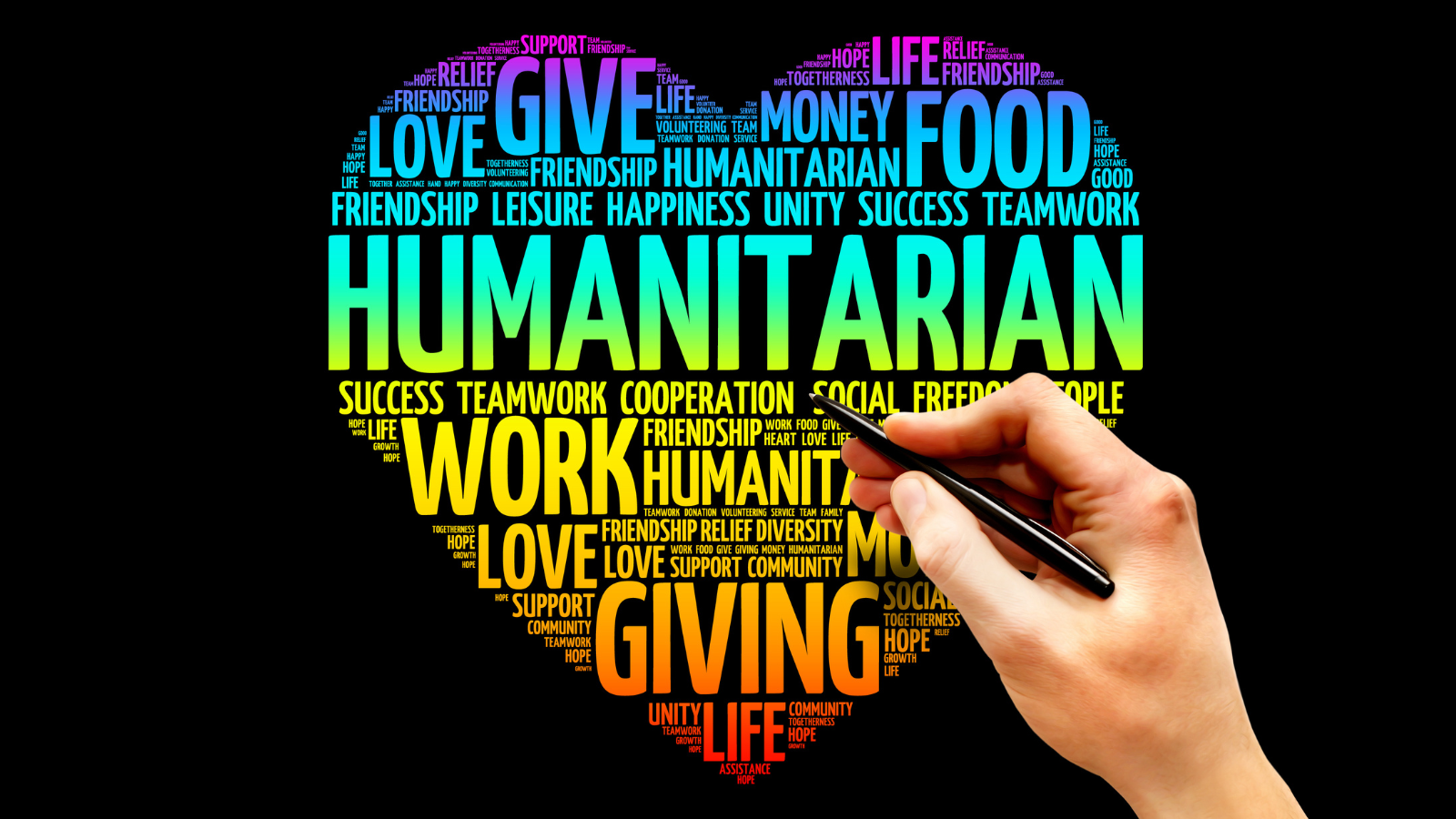
But ultimately I was in at the pole for the humanitarian sector, continued based on earlier experiences that I’d had in my career. And I really wanted to find opportunities to engage with those local communities, which is what I was able to do in the humanitarian sector. Really being able to listen to the solutions that are being offered at the grassroots level, and then finding ways in which to take those to scale, finding ways in which to amplify the voices of the local change makers so that the solutions can reach even wider communities, can have an even greater ripple effect. So although on paper, the experience is very diverse, there’s no question for me that they work, kind of unified, in the purpose of really trying to improve the world we live in and improve the lived experiences of people across the globe.
And one such way Liz and her team at Ripple Effect Images works to improve, lived experiences is by helping their clients spread the message of their products and services through storytelling. That takes us to the story of a local community in Guatemala where a non-profit called Stove Team International is on a mission to solve a life-threatening problem plaguing women and young children.
Indoor smoke from heating and cooking fires is the single biggest killer of women and children aged under five. So, what do we do about that? And Stove Team International along with their partners in Guatemala really understood how providing women with a clean source of cooking could really transform lives on so many levels. And so they did just that. They found a solution. And as with all the stories that we cover at Ripple, we start from a solution. We start from something that’s working, and in this case, it was a stove that could be easily and cost-effectively manufactured and then could be distributed to families within those communities, within those regions and then out and out from there.
And I tell this story because of the importance of the storytelling in them being able to take it to scale.
In case you’re wondering…storytelling is important because you can have the best product or service in the world, but if no one knows about it or if you don’t have a way of letting the people who need it most know about it, then everyone suffers. Stories have a way of drawing people in, making them relate to the message, and that’s when the magic happens.
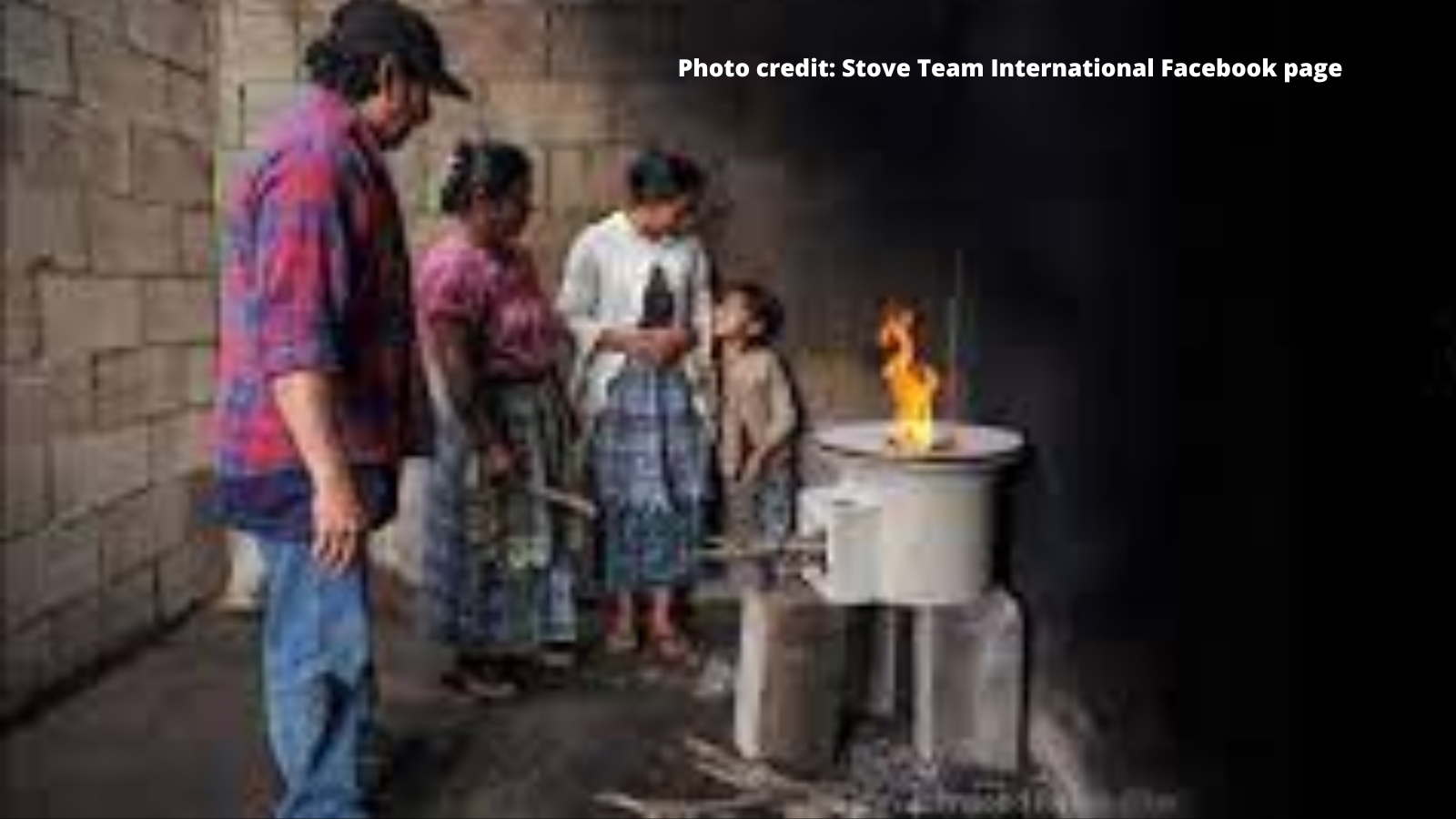
When you talk about clean cookstoves in and of themselves, it’s a particular, you know, it’s a piece of equipment it’s not particularly sexy if you can’t see it. And it doesn’t necessarily on its own tell you the story of the transformative impact that it can have, but through the time that Ripple spent in the community in Guatemala and the photographer and filmmaker that spent time there and really understood how it was changing the lives of the people who were benefiting from this particular cookstove, we were able to tell a story that enabled the organization to be able to reach a much wider audience, to be able to really accurately convey the human impact story of clean cooking.
Once they understood the impact of clean cooking at a local level in this Guatemalan community, they crafted a story that could reach and appeal to the masses…in other words, they were positioned to create a ripple effect. Now they were ready to execute the next part of their process, creating a film.
When we were creating this film, we were wanting to make sure that we were able to convey the need. And this is an important distinction to make here because Ripple does really focus on solutions, but at the same time, it’s really important to make a compelling case for why the need is there. And sometimes that’s using data. Sometimes done using human stories, going into a family’s life, into their home, seeing how they’re living, seeing the impact that these challenges are having on their daily life and being able to convey that need in a scientific and evidence-based way, but also in a really human way.
As Liz explains, capturing the essence of the story through film involved more elements.
And then the next thing is being able to demonstrate why that organization is really uniquely positioned to help implement that solution. You know, what is it about it? Have they got some innovative technology? Are they, do they have a particularly good reach? Have they got the networks and the connections? What is it about that organization in this case, Stove Team International, that should inspire the competence of a donor or another partner to say, “Hey, this is where we need to be investing our resources because these guys are the ones (guys or girls)…these are the women that are really making a difference.” And then I think the third thing in the storytelling is being able to demonstrate how and why it’s sustainable. And that’s a key part of the scalability as well. How can this particular solution continue to grow, be replicated how can it continue to reach even more families and communities and how can it really be something that continues to be effective for very many years to come?
Let’s recap the process Liz described so far in understanding a problem.
1). Gather qualitative data through conversations with the local community.
2) Define the need.
3). Quantify the need through numerical data.
And 4) Present why a particular organization is positioned to solve the problem. You know, this reminds me of the scientific method where the problem-solving process begins with identifying the problem and from there developing a hypothesis, making observations, and experimenting. It ends with reaching a conclusion.
In this situation, Liz and her team, in their own way, leverages the scientific method to scale the stories of organizations with proven solutions.

Storytelling is the glue that holds together all of those different elements of business processes and being able to grow an organization because whatever it is that you are going to do to, in order to scale your operation, you need to be able to communicate that effectively. And storytelling is the way in which you are equipped to be able to do that. We start from a place of seeing that there is a solution that is, has been proven. We can see that something is working.
We can see that this has real potential and there’s evidence to show that’s the case. And that’s a real pivot point in so many grassroots level organizations, whether that’s a nonprofit or a small business, a social enterprise, that pivot point is when your storytelling can open the doors for you. And if you haven’t got to a place where you able to tell their stories, it may well hold you back for a period of time. And so, what Ripple really seeks to do is to identify those nonprofits that are at that critical point in their evolution. They have a great idea. They have something that works, they proven it, but they haven’t yet been able to mobilize the resources to take it to the next level. And our intent is through giving them the tools, the storytelling tools, it will act as a catalyst for them to be able to start attracting significant amounts of, of support, whether that’s from foundations or corporate donors, or whether that’s through fundraisers.
Okay. That makes a lot of sense. Well, how long did it take to create the film and then once the film was created, what happened next?
So the film, the time that it takes to make a film can depend on so many factors. And so there’s no kind of hard and fast rules, but what I would say is we invest a lot of time in the pre-production. We invest time in talking to the nonprofit, understanding their operation, understanding their workflow, then understanding the people. And that can take anything from, you know, a few days to a few weeks, to a few months.
We want to make sure that our storytellers have time to build trust with the people that they’re covering, that they can spend time observing how they go about living their daily lives, that they, you know, that they can really build a rich picture of what that looks like, for that particular family or that community, rather than, you know, a list of shops that they have to go in and tick off a list and then they’re out of there.
In other words, they take their time and don’t rush the process.
The storytelling that we strive for is much more authentic. And that takes time.
At this point, Liz and her team at Ripple Effect Images are now ready to finalize the film by editing all the footage they’ve created. Coming up after the break, we’ll hear exactly what happens next, the results of their work with Stove Team International and…how you can apply Ripple’s process to your own company to achieve a breakthrough that’s both transformative and sustainable.
You started your business because you believed you could make a difference. But now you have more demand than you can keep up with and if you don’t get your operations in order soon, you could lose everything you’ve worked so hard to build. The chaos is causing angry customers, bad reviews, failed audits, and more. The need for a unified team with processes they can follow and tools they can use without your presence is apparent. But where can you go for support?

The Smooth Operator masterclass may be the solution you’re looking for. It’s an on-demand, online course that not only teaches you what business infrastructure is, but also shows you how to create it through video demonstrations and access to a private community where you can get even more support. Build a foundation for operational success with a scale-ready framework that’s tried, tested and true. Sign up today at SmoothOperator.courses. That’s SmoothOperator.courses.
Before the break we learned about Stove Team International’s quest to scale their message of clean cooking throughout Guatemala. Ripple Effect Images partnered with them to tell the story of their solution through the community’s voice. Here’s Liz…
And so while in many ways going in and taking some visual content and then telling the story through a narrator would be an easier way in which to tell the story we really, really focus on ensuring that the story is being told by the people who are driving the change or benefiting from the change. And that takes longer. That’s a harder story to tell. It’s more complex.
With the community as the narrators of the story that covers the people element of business infrastructure. There’s also the filmmakers, producers, photographers, and editors. The other elements of business infrastructure include people and processes and linking them with the team to provide a foundation upon which sustainable scale can actually happen.
And then there will be other elements of production to make sure that we have really producing a world-class quality film, in sound design, and any other visuals that we might want to integrate to show data, for example, that will be also incorporated during the production phase. So, it’s possible to make a film in a couple of weeks. It’s probably more likely that it will take a few months, but we really design our process around the organization, the partner that we’re working with, and what their needs are. If they have a particular event that they need content for that, of course we can accommodate that. But we always want to make sure that we’re producing something that’s going to serve them for, for a number of years and that’s, so that is all taken into account in our design process.
In the case of Stove Team International, it took several months to properly develop the story through film.

That film, was also translated into Spanish and it was widely distributed in Latin America and it enabled the Stove Team International and the factories that they’d set up to really promote their stoves to nonprofits in the region to get the attention of the government in the U.S. The film was used up fundraisers that enabled them to, to mobilize huge amounts of resources, to be able to build a new factory in Nicaragua, and distribute nearly 8,000 new stoves in a really short period of time.
Wow! Now that’s scale! 8,000 new stoves in Guatemalan homes that likely would not have happened were it not for the success of this storytelling campaign. Imagine the back-office production and distribution operations required to meet this type of demand in a short time. Business infrastructure made it possible to support that demand.
So you can see there was a real combination of different outcomes. Some of them were about awareness. Some of them were about inspiring the competence of other stakeholders that could enable them to increase their impact. Some of them were financial. It was about mobilizing the resources that enabled them to expand their production facilities.
This is such a great story so I couldn’t help but wonder how are they doing today?
I don’t have specific figures for you, Alicia, but I know that they’ve just continued to go from, spent the strength, both deepening their impact within specific communities and broadening their reach geographically. It’s so important to acknowledge that what Stove Team International were able to do is that they were able to scale up their operation and keep pace with the increased demand that arose as a result of their increased profile. And so that’s, you know, kudos to them because they were able to do that in, in a truly incredible way. And they have continued to grow their operation in an extraordinary way. And, and it can be quantified in the number of lives that have been saved as a result of people having access to that clean cooking.
Are you inspired now to use storytelling to spread your reach? If there’s a social impact to your product or service’s solution then consider reaching out to Ripple Effect Images, and even if you don’t then consider this advice from Liz.
So we primarily work with nonprofit organizations, but we’re really committed to working with nonprofits and social impact organizations that are, that are work, that are committed to multiply the impact of proven solutions. And so people should always feel like they can reach out to us.
You know, what I would say to people is it’s what is…take the time to watch different things and see what speaks to you as an individual and the brand, or the organization that you’re seeking to tell the story of. And I think that really helps you understand the kind of story that you’re trying to tell.
So it’s always best to start with, you know, being clear on what your goals are. So, what are you trying? Who are you trying to reach? What do you want them to take away? And where are you most likely to find them? Because the kind of storytelling that you’re going to be seeking to do on social media is going to be different than if you are perhaps seeking to make a pitch to a specific investor where you perhaps have a little bit more time. So, getting really clear on what those objectives are, and they, you know, then being precise. You know, not just about getting more clients, but, but we really understand really understanding what you want them to feel, what you want, how you want them to be inspired, to act as a result of that engagement, and then incorporating that into, you know, your overall communication strategy.
It’s really important always to come back to the human element of it, it’s so easy to get caught up in the messaging, but when you’re trying to convey, reach people in a really engaging way, it has to have a human element to it.
You know, who is the customer that’s going to be benefiting, what will they feel? How will their life be better? What’s, you know, what’s, what’s the problem that you’re solving? And how do you tell that story in, from the place of the person closest to them that be benefiting? So, you know, rather than the sales manager or the CEOs, speaking about a service that they offer, how can you incorporate the perspective of the person that’s using the service at the end or the product at the end? How has their life being transformed? And I think just flipping that on its head can, can get you to a place where you’re starting from a more compelling storytelling place.
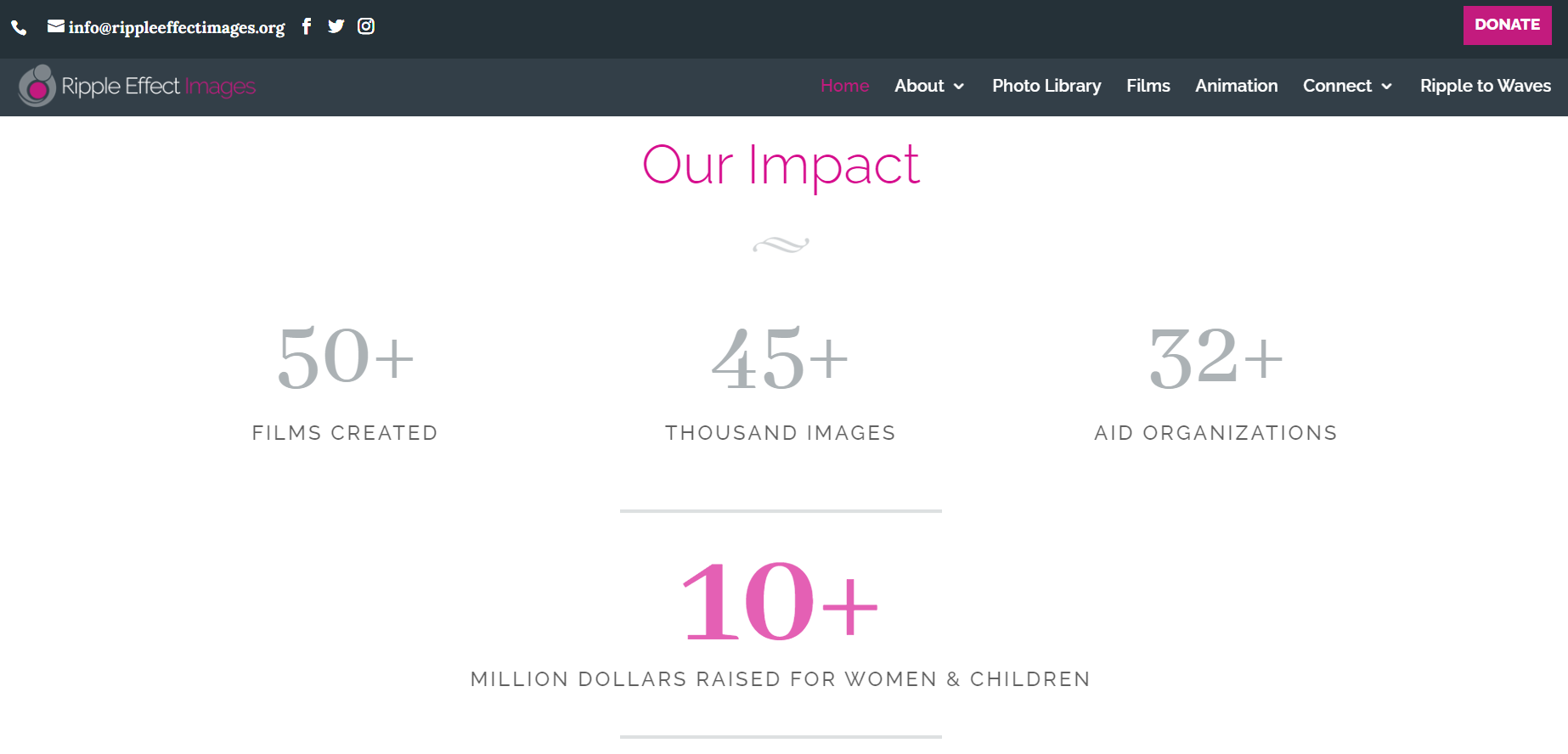
To date, Ripple Effect Images has created over 50 films, taken over 45,000 images, and has raised over $10M US for social impact organizations around the world. How can you leverage storytelling to amplify your message and boost revenue? Be sure to check out BusinessInfrastructure.TV. That’s where we’ll have the resources Liz recommends as well as a sample of some of their short films.
What a beautiful way to, to sum all of this up. I can’t think of a better way to, to end this particular story. Thank you so much, Liz, for taking time to share your scale tale with us.
Thanks, Alicia. It’s my pleasure. I think they’re a great example of how excellent storytelling enables you to mobilize a number of different elements of your growth plan and take your operation to scale.

Thank you so much for listening! If you enjoyed this episode, then you’ll be glad to know we have even more great scale tales lined up for you. So make sure you subscribe to the show so that you don’t miss them!
And while you’re at it, leave a five-star rating and review wherever you’re listening.
Growing and scaling a business is no small feat, but remember, Stay focused. Be encouraged. This entrepreneurial journey is a marathon and not a sprint. Until then, keep operating smoothly as you work to cure your company’s back-office blues.
This episode was written, produced, and narrated by me, Alicia Butler Pierre. Audio editing by Olanrewaju Adeyemo. Original score and sound design by Sabor! Music Enterprises.
This is the Business Infrastructure – Curing Back-Office Blues podcast.


